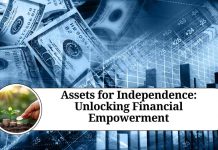Introduction
In the world of finance, capital gearing plays a vital role in assessing a company’s financial structure and risk profile. It is a concept that involves the mix of a company’s equity and debt financing and determines how a company funds its operations and growth. Understanding capital gearing is crucial for investors, analysts, and business owners to make informed decisions about investments, financial strategies, and risk management. In this blog, we will explore the concept of capital gearing, its importance, and how it affects a company’s financial position.
What is Capital Gearing?
Capital gearing, also known as financial leverage or financial gearing, refers to the proportion of a company’s capital structure that is financed by debt and equity. It represents the relationship between a company’s long-term debt and equity financing. In simpler terms, it signifies how much debt a company uses to finance its assets in comparison to its equity.
The capital gearing ratio is often expressed as a percentage and is calculated by dividing long-term debt by total capital employed (long-term debt + equity). This ratio helps assess the financial risk and potential returns associated with a company.
Importance of Capital Gearing
- Risk and Return: Capital gearing is a crucial factor in evaluating the risk and return trade-off for investors. Higher capital gearing indicates higher financial risk, as a company with more debt has higher interest obligations and may be more susceptible to economic downturns. On the other hand, a higher proportion of equity funding implies lower financial risk but potentially lower returns. The optimal capital gearing level depends on a company’s risk appetite, industry, and growth prospects.
- Cost of Capital: Capital gearing influences a company’s cost of capital. Debt financing generally comes with fixed interest payments, while equity financing does not have such obligations. As a result, a higher proportion of debt in a company’s capital structure leads to higher interest payments, increasing the overall cost of capital. Companies need to strike a balance to optimize their cost of capital while maintaining financial stability.
- Growth and Expansion: Debt financing through capital gearing can facilitate a company’s growth and expansion plans. By leveraging debt, a company can access additional funds to invest in new projects, acquisitions, or research and development activities. However, excessive reliance on debt can also hinder growth if the company struggles to meet interest payments or faces difficulties in refinancing debt.
- Financial Flexibility: Capital gearing affects a company’s financial flexibility. Companies with a higher proportion of equity financing have more financial freedom as they are not bound by strict debt obligations. They can adapt to changing market conditions more easily and have a better capacity to weather economic downturns. Conversely, heavily geared companies may face financial constraints due to interest payments, limiting their flexibility in managing unforeseen events.
- Stakeholder Impact: Capital gearing influences various stakeholders associated with a company. Higher debt levels can lead to increased financial risk for creditors and bondholders, affecting their confidence in the company’s ability to meet obligations. Similarly, shareholders may be concerned about the potential dilution of earnings due to interest payments. Proper management of capital gearing is essential to maintain healthy relationships with all stakeholders.
Conclusion
Capital gearing plays a fundamental role in determining a company’s financial structure, risk profile, and growth potential. Striking the right balance between debt and equity financing is crucial for optimizing a company’s cost of capital, managing risk, and ensuring sustainable growth. Investors and business owners must carefully evaluate a company’s capital gearing ratio to assess its financial health, risk tolerance, and potential returns. By understanding capital gearing, stakeholders can make informed decisions about investments, financial strategies, and risk management, contributing to long-term business success.
Other Related Blogs: Section 144B Income Tax Act
Frequently Ask Question
Q1: What is capital gearing?
A1: Capital gearing, also known as financial leverage or financial gearing, refers to the mix of debt and equity financing used by a company to fund its operations and investments. It represents the relationship between a company’s long-term debt and equity capital.
Q2: How is the capital gearing ratio calculated?
A2: The capital gearing ratio is calculated by dividing a company’s long-term debt by its total capital employed (long-term debt + equity) and expressing it as a percentage. The formula is: Capital Gearing Ratio = (Long-Term Debt / Total Capital Employed) x 100.
Q3: What does a high capital gearing ratio indicate?
A3: A high capital gearing ratio indicates that a company relies heavily on debt financing to fund its operations and investments. This suggests a higher financial risk due to increased interest obligations and potential difficulties in meeting debt payments.
Q4: What does a low capital gearing ratio indicate?
A4: A low capital gearing ratio suggests that a company relies more on equity financing than debt. It signifies lower financial risk as there are fewer interest obligations to be met. However, it may also imply limited leverage for growth and potential lower returns.
Q5: What factors should be considered when determining the optimal capital gearing ratio?
A5: Determining the optimal capital gearing ratio depends on various factors, including the company’s risk appetite, industry dynamics, growth prospects, cash flow generation, interest rates, and market conditions. It requires careful analysis and consideration of the company’s specific circumstances.
Q6: How does capital gearing impact a company’s cost of capital?
A6: Capital gearing affects a company’s cost of capital. Higher debt levels increase the interest payments a company has to make, leading to a higher cost of capital. Conversely, a higher proportion of equity financing reduces interest obligations and can lower the cost of capital.
Q7: What are the advantages of high capital gearing?
A7: High capital gearing can provide companies with access to additional funds for growth and expansion. Debt financing allows companies to leverage their assets and potentially generate higher returns for shareholders. However, it also comes with higher financial risk and interest obligations.
Q8: What are the disadvantages of high capital gearing?
A8: High capital gearing brings higher financial risk due to increased debt obligations. Companies with high debt levels may face difficulties in meeting interest payments, especially during economic downturns. Excessive leverage can limit financial flexibility and constrain future growth opportunities.
Q9: How does capital gearing impact shareholders and creditors?
A9: Capital gearing affects both shareholders and creditors. Shareholders may be concerned about the potential dilution of earnings due to interest payments, while creditors and bondholders are exposed to higher financial risk if a company struggles to meet its debt obligations. A balanced capital gearing strategy is important to maintain healthy relationships with all stakeholders.
Q10: How can a company manage its capital gearing effectively?
A10: Managing capital gearing effectively requires careful financial planning and risk management. Companies should assess their risk tolerance, evaluate market conditions, optimize their capital structure, diversify funding sources, and maintain a healthy balance between debt and equity financing. Regular monitoring of the capital gearing ratio is essential to ensure it remains within acceptable levels.




















